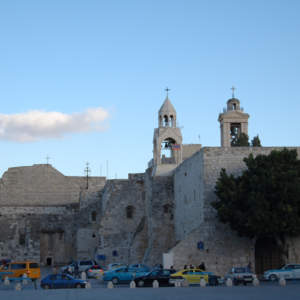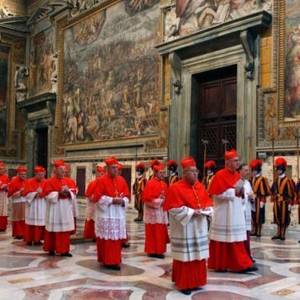Rumors have been circulating that the Catholic Church has decided to disregard the health of some of its parishioners. The subject of this chatter concerns those who have Celiac Disease or other types of gluten sensitivities. However, the Catholic Church is not inadvertently prohibiting its members with Celiac Disease from receiving communion. In fact, the Church even offers a couple of substitute options for those who are not able to consume gluten.
You chose: church
-
-
The Church of the Nativity in Bethlehem is one of the most important religious locations in the entire world. However, since its completion in the 6th century, the basilica has deteriorated due to political instability and natural corrosion. Hope is not lost as an Italian company specializing in the conservation of artistic and historical heritage, Piacenti S.p.A., is on its way to successfully completing a multi-million dollar restoration of this significant religious site.
-
After the two synods on the family convened in October 2014 and 2015, the publication of Pope Francis’s highly anticipated apostolic exhortation, Amoris Laetitia, or “The Joy of Love,” had raised hopes and concerns before he’d even written it.
-
“He shall be called Francis.” Never before had a name rung with such clarity in the ears of those awaiting word of the new Pope in Saint Peter’s.
-
The mafia has not always found an enemy in the Church. Pope Francis firmly asks that those in the mafia convert. It is a just appeal to the members of the mafia, but also to a Church that has not always been able to free itself from its more ambiguous role, proposing piety on the one hand, and insidious superstition on the other.
-
After the resignation of Joseph Ratzinger, the Conclave that will lead to the election of a new Pope began in Vatican City. Here is the list of those who are most likely to become the new leader of the Catholic Church.
-
Op-EdsFor two of their three thousand year history, the cultural bedrock and core values for the people South of Rome was the Catholic Church. Waves of conquers came and went changing governments and policies, but the Church always persevered (the Mass, Sacraments, Saints, rituals, etc.). Similarly, in American’s Little Italy urban villages, through the first half of the twentieth century, the same Church was the basis for those same core values down to the rhythm of daily life (morning Mass, mid-day Angelus, evening Rosary for Peace, etc), and the calendar was punctuated by ancient holy events (holidays, Saints Days, special masses, etc.).... In the second half of the twentieth century all that changed. The social history of the southern-Italian American people through the mid-twentieth century cannot be understood apart from the Church, and the sociology of southern-Italian Americans post 1950s must seek to understand the affects of the profound secular and Church changes in the current milieu (e.g. movement to heterogeneous suburbs, liberalism in the form of sexual and marriage mores, etc.). Most important of all, the Vatican II changes in Catholicism, which in less than one generation tore asunder the core rituals, ideology, architecture, etc. of the two thousand year ‘traditional’ Church of southern-Italian Americans, and now seems to be moving back to its traditional roots.
-
New York's Archbishop was one of 22 Catholic churchmen who became Cardinals in a ceremony held in Rome by Pope Benedict XVI. Traditionally Americans are ruled out as papal contenders, with the argument that the world doesn't need a superpower pope. There actually is another American as well, Cardinal Edwin O'Brien.





































